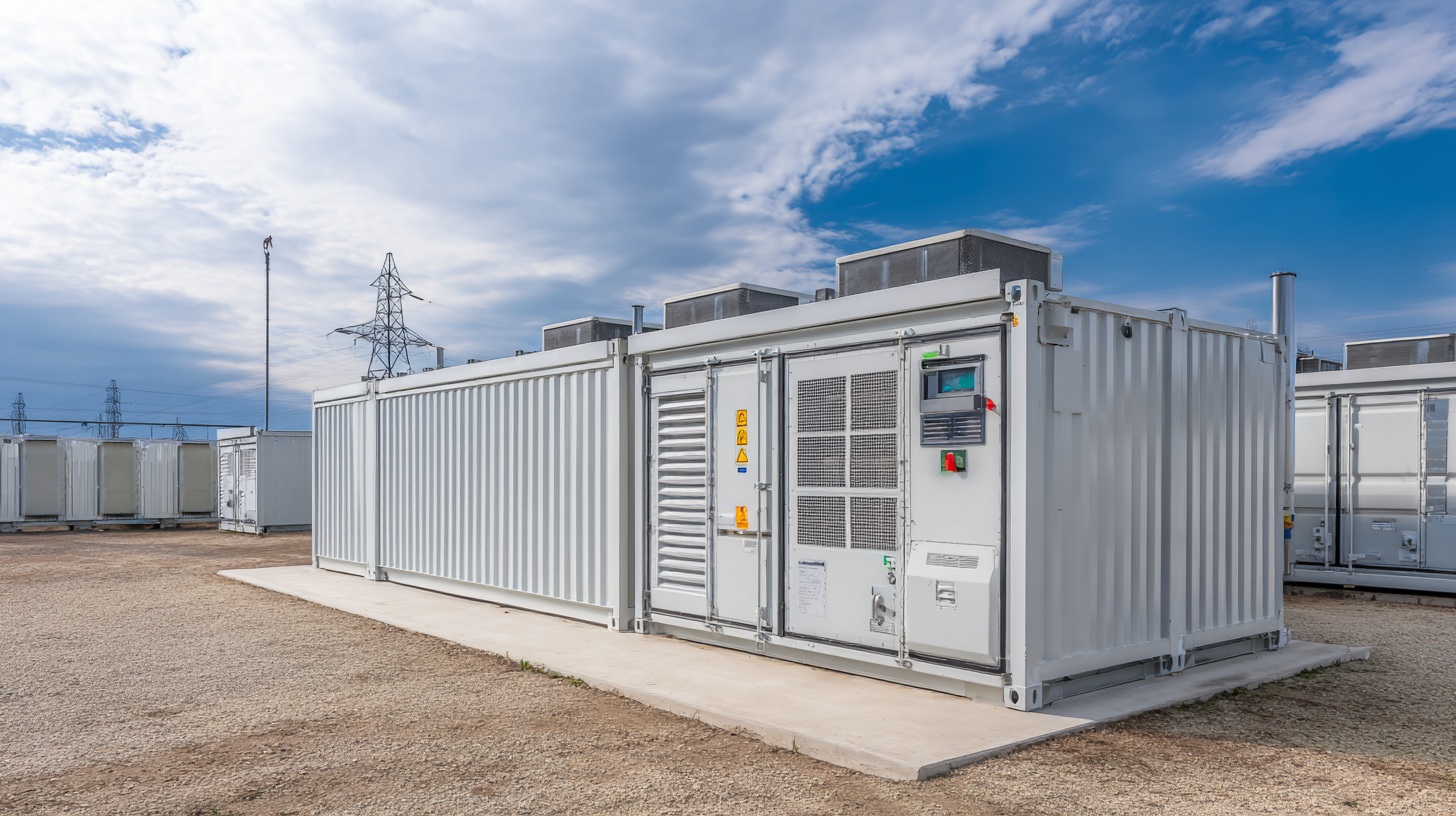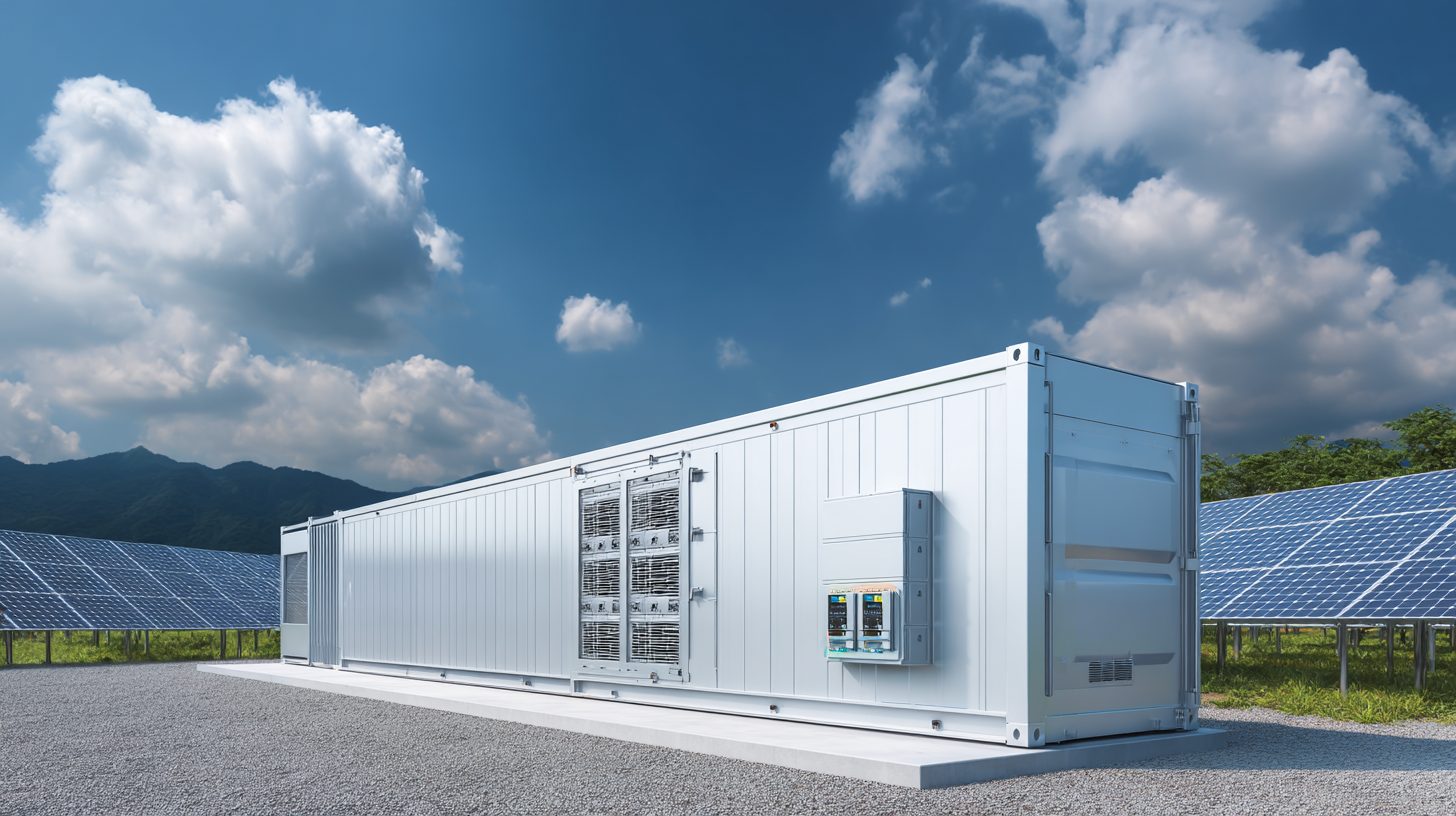The demand for renewable energy sources is rapidly increasing, necessitating advancements in energy storage solutions. Utility Scale Battery Storage (USBS) has emerged as a critical component in this transition, enabling the efficient management of energy supply and demand. According to a recent report by BloombergNEF, the global market for utility-scale batteries is projected to grow significantly, reaching an estimated capacity of 1,000 GWh by 2040. This growth reflects the increasing need for grid stability, as intermittent renewable energy sources like solar and wind become more prevalent. Additionally, the International Energy Agency (IEA) emphasizes that USBS can reduce reliance on fossil fuels and enhance energy security. However, selecting the right system requires a comprehensive understanding of essential technical specifications and considerations. In this blog, we will explore the various types of USBS systems available and the criteria necessary for determining the most suitable option for specific energy needs.

Utility scale battery storage has emerged as a pivotal component in the transition towards greener energy solutions. As global electricity demand continues to rise, the need for reliable and efficient energy storage systems is more pronounced than ever. According to a report by BloombergNEF, global battery storage installations are expected to exceed 500 GWh by 2030, marking a compound annual growth rate (CAGR) of over 30%. This explosive growth can be attributed to various factors, including the declining costs of battery technologies and increasing government incentives aimed at promoting renewable energy sources.
In addition to these market trends, it is essential to understand the key specifications driving the selection of utility scale battery systems. Factors such as energy density, charge/discharge efficiency, and lifecycle durability have significant implications for system performance and overall cost-effectiveness. Recent analyses indicate that lithium-ion batteries dominate the market, accounting for an estimated 70% of utility-scale installations due to their high efficiency and declining costs. However, emerging technologies, such as flow batteries and solid-state batteries, are gaining traction and are projected to contribute to around 30% of the market share by 2030, providing enhanced scalability and longevity in energy storage solutions.
When selecting a utility-scale battery storage system, understanding the essential technical specifications is crucial for achieving optimal performance and longevity. Key factors such as energy density, cycle life, and depth of discharge play significant roles in determining how well the battery can meet energy demands over time. Energy density, measured in watt-hours per kilogram, dictates how much energy can be stored and subsequently delivered, affecting the overall efficiency of the system. A higher energy density can lead to a more compact system that maximizes space and reduces installation costs.
Cycle life and depth of discharge are also vital considerations. Cycle life refers to the number of charge and discharge cycles a battery can endure before its capacity significantly degrades. A battery system that supports a higher cycle life is preferable for utility-scale applications, as it reduces the frequency of replacements and maintenance, thereby lowering overall costs. Additionally, understanding the depth of discharge—how much energy can be withdrawn from the battery without causing damage—ensures that the system operates within safe limits, extending its usable life. These specifications provide a framework for selecting the right battery storage system that aligns with specific energy requirements and operational needs.
When evaluating utility-scale battery storage solutions, a critical comparative analysis revolves around the two leading technologies: lithium-ion and flow batteries. Lithium-ion batteries have surged in popularity due to their high energy density, efficiency, and declining costs. They are particularly favored for applications requiring rapid discharge and high cycle rates, making them ideal for dynamic energy management and integration with renewable sources. However, their performance can degrade over time, raising concerns regarding their lifespan and recycling after use.

On the other hand, flow batteries present a compelling alternative, particularly in terms of scalability and longevity. Unlike lithium-ion batteries, flow batteries store energy in external tanks filled with liquid electrolyte, allowing for easy scaling of power and energy capacities. This feature makes them well-suited for long-duration applications, maintaining stable performance even after thousands of cycles. While they currently have lower energy density and can be more expensive upfront, their robustness and longer operational lifespan make them a strong contender in the transitional period towards a sustainable energy grid. As the energy landscape evolves, understanding these differences will be crucial for selecting the right technology to meet specific operational needs and regulatory standards.
When selecting a utility-scale battery storage system, several critical factors come into play, particularly cost, efficiency, and capacity. According to a recent report by BloombergNEF, battery system costs have decreased by 89% since 2010, making them more accessible for large-scale energy projects. This significant reduction is primarily driven by advancements in lithium-ion technology, which now accounts for around 90% of the market share. Understanding the total cost of ownership, including installation, operational expenses, and maintenance, is vital for project profitability.
Efficiency is another vital factor, often defined by how much energy stored can be used effectively. DC-coupled systems, for example, typically achieve round-trip efficiencies exceeding 90%. The U.S. Department of Energy's Solar Energy Technologies Office highlights that increasing the efficiency of battery storage can dramatically enhance grid reliability and energy availability. Moreover, capacity considerations, measured in megawatt-hours (MWh), are essential for determining how much energy can be stored and dispatched during peak demand times. A well-balanced approach that weighs cost against efficiency and capacity will empower project developers to make informed choices that align with their operational needs and financial objectives.
| Specification | Description |
|---|---|
| Cost ($/kWh) | 150 - 400 |
| Energy Capacity (MWh) | 10 - 500 |
| Cycle Life (cycles) | 3000 - 10000 |
| Round-Trip Efficiency (%) | 75 - 90 |
| Discharge Rate (MW) | 1 - 100 |
| Response Time (ms) | 10 - 100 |
Utility scale battery storage has gained significant traction in recent years, with numerous successful deployments illustrating its critical role in energy management. One standout case is the Hornsdale Power Reserve in South Australia, which boasts a capacity of 150 MW/194 MWh. According to the International Energy Agency (IEA), such large-scale battery systems can enhance grid stability and reduce the reliance on fossil fuels, leading to a more sustainable energy future. The Hornsdale facility has reportedly saved customers millions by providing frequency control and enabling greater incorporation of renewable energy sources.

Another compelling example is the Long Beach Renewable Energy Project in California. This project integrates a 100 MW battery system aligned with solar and wind power, showcasing how hybrid solutions can optimize energy distribution, especially during peak demand periods. The U.S. Energy Information Administration (EIA) indicates that energy storage capacity in the U.S. is projected to grow to 4,500 MW by 2025, driven by the necessity for reliable and resilient energy systems. These case studies not only underline the feasibility of utility scale battery deployments but also affirm their potential to transform the modern energy landscape by providing essential services and mitigating carbon emissions effectively.